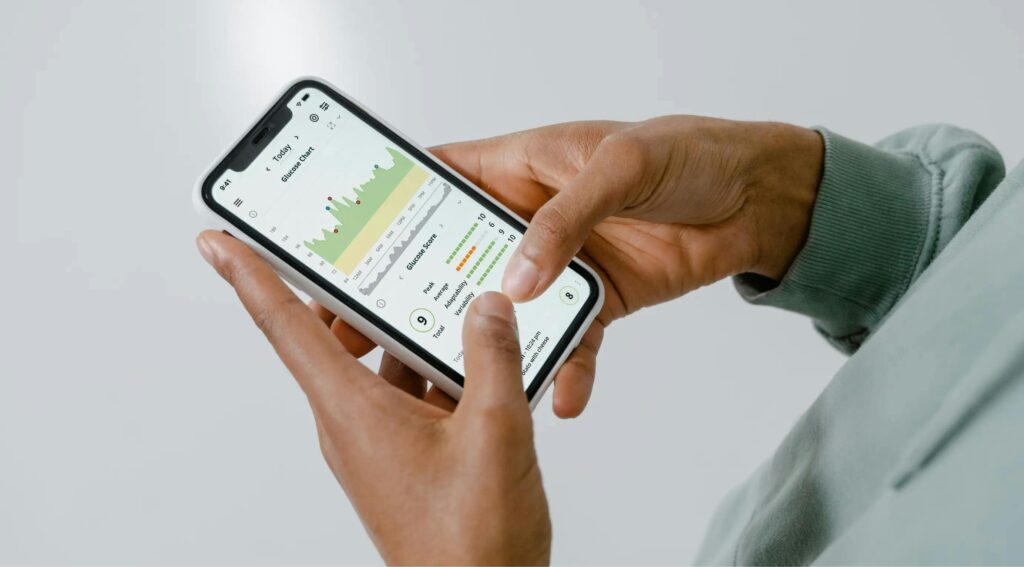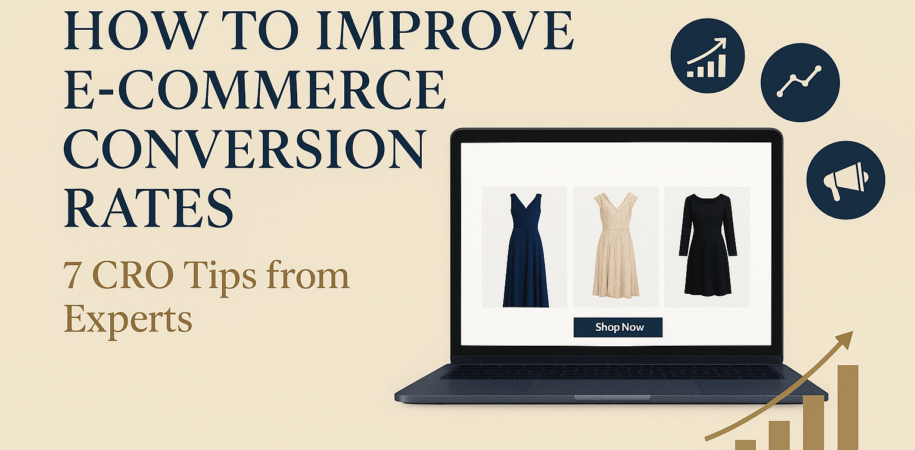If you’re running an online store, you’ve probably asked yourself at some point: How can I turn more visitors into paying customers?
That question lies at the heart of one of the most powerful levers in online business growth — how to improve ecommerce conversion rate.
In simple terms, your conversion rate is the percentage of website visitors who complete a desired action, typically making a purchase. Increasing this metric, even by a small amount, can lead to dramatic revenue gains — without spending more on traffic.
In this guide, we’ll break down 7 expert-backed strategies that are designed to help you unlock hidden revenue, eliminate friction, and optimize your online store for actual results — not just clicks.
Why Ecommerce Conversion Rate Matters More Than You Think
Most ecommerce brands obsess over getting more traffic — through SEO, paid ads, influencer marketing, and social campaigns. But here’s the truth: if your site doesn’t convert, you’re throwing money away.
That’s why conversion rate optimization (CRO) should be a core pillar of your broader ecommerce marketing strategy. When your store is optimized for conversions, every visitor becomes more valuable. It lowers your cost per acquisition, increases your return on ad spend (ROAS), and boosts profitability across the board.
1. Understand Real User Behavior, Not Just Numbers
You can’t fix what you don’t understand. One of the biggest mistakes brands make is optimizing based on assumptions instead of insights.
Tools like Google Analytics, Hotjar, and Microsoft Clarity allow you to track how users actually interact with your store — where they click, where they drop off, and where they get confused. This kind of behavior-based insight is critical for identifying friction points.

Start by analyzing high-traffic, low-conversion pages. Are users scrolling past your CTA? Are they hesitating on the shipping info? This kind of qualitative feedback is where the smartest CRO strategies begin.
2. Build Product Pages That Convert — Not Just Inform
Your product page is your digital salesperson. If it’s vague, cluttered, or generic, it’s costing you conversions.
To improve ecommerce conversion rate, your product pages must be designed to reduce uncertainty and increase desire. That includes:
- High-resolution images and videos showing multiple angles
- Clear, benefit-driven product descriptions
- Transparent pricing and shipping information
- Trust elements like secure checkout badges and return guarantees
- Social proof in the form of verified customer reviews
Don’t just list features — sell the outcome. Instead of “polyester fabric,” say “wrinkle-free comfort designed for all-day wear.”
When combined with an effective low cost ecommerce marketing idea like user-generated content (UGC) or influencer seeding, a high-converting product page can quickly become your most valuable asset.
Make Checkout Fast, Frictionless, and Mobile-First
Cart abandonment is one of the most frustrating problems in e-commerce — and much of it happens at the final hurdle: the checkout.
If your checkout process is slow, confusing, or overly demanding, you’re bleeding sales.
Here’s how to fix it:
- Allow guest checkout without forcing account creation
- Minimize the number of form fields
- Offer multiple, trusted payment options (PayPal, Apple Pay, etc.)
- Display progress bars and shipping info early
Also, make sure the entire process is optimized for mobile ecommerce. A checkout flow that works well on desktop but breaks on mobile will destroy your conversion rate — especially considering the majority of ecommerce traffic now comes from smartphones.
Speed Up Your Site (It’s a Dealbreaker)
Speed isn’t just a user experience issue — it directly impacts both SEO rankings and conversion rates. According to Google, even a one-second delay in mobile page load can reduce conversions by up to 20%.

To improve load times:
- Compress large images without losing quality
- Use lazy loading for content and images
- Eliminate unused JavaScript and CSS
- Choose a fast, reliable hosting solution
Fast-loading, mobile-optimized ecommerce sites not only convert better but also reduce bounce rates, increase average session durations, and earn more visibility in search results.
Use Psychology to Influence Buyer Behavior
Conversions aren’t purely rational — they’re emotional too. By using simple psychological triggers, you can guide hesitant visitors toward making a purchase.
Here are a few high-converting tactics:
- Urgency: Limited-time offers or countdown timers
- Scarcity: “Only 3 left in stock”
- Trust: Secure checkout badges, real customer reviews, and satisfaction guarantees
- Social Proof: Real-time popups (“Someone just purchased this”) or UGC photos in reviews
However, authenticity is key. Overusing urgency or fake scarcity will erode trust. Use these tactics responsibly and only when they reflect real conditions.
Test Everything — Then Test Again
What works for one ecommerce site won’t necessarily work for another. That’s why A/B testing is essential if you want to systematically improve your conversion rate.
Start by testing:
- Button text and colors
- CTA placement and wording
- Checkout flows (single-step vs. multi-step)
- Headline variations
- Product image formats
Track meaningful metrics like conversion rate, average order value, and bounce rate — not just clicks. And remember: tests are only as good as the data they’re based on. Let statistically significant results guide your decisions.
Build Trust Through Transparency and Support
Many conversion problems stem from uncertainty. Shoppers hesitate because they’re unsure about return policies, delivery times, or what happens if something goes wrong.
Build confidence by:
- Displaying your return and refund policy clearly on product and cart pages
- Offering real-time support through live chat or AI bots
- Publishing verified customer reviews — ideally with images
- Including FAQs directly on product pages
When visitors feel supported, safe, and informed, they’re far more likely to complete the purchase.
Bonus Tip: CRO + Smart Marketing = Growth
Conversion rate optimization doesn’t exist in a vacuum. To get the most out of your efforts, combine your CRO strategies with scalable acquisition tactics — especially ones that don’t drain your budget.
If you’re working with limited resources, start with these low-cost ecommerce marketing ideas to drive qualified traffic. Then, use the strategies in this guide to convert those visitors into loyal customers.
It’s the synergy between smart marketing and strong on-site optimization that creates long-term, profitable growth.
Final Thoughts
If there’s one takeaway from this guide, it’s this:
Improving your ecommerce conversion rate is about removing friction, building trust, and aligning your store with how your customers think and behave.
This isn’t a one-time fix — it’s an ongoing process. But the payoff is huge. You’ll get more sales from the same traffic, more loyal customers, and a stronger foundation for sustainable growth.
Whether you’re refining your product pages, simplifying your checkout, or combining CRO with your broader ecommerce marketing strategy, the key is to think critically, test continuously, and always prioritize your customer’s experience.
Ready to turn more visitors into loyal customers? Contact DTLA Marketing today to learn how our CRO services can optimize your e-commerce store and boost your sales. Let’s grow your business together!
FAQs
Q: What is a good e-commerce conversion rate?
A: Industry benchmarks vary, but 2%–3% is average. Top-performing stores can exceed 5–8%, depending on niche and traffic quality.
Q: How long does it take to see results from CRO?
A: Small fixes like improving page speed or copy can yield results within days. A/B tests or design changes may take several weeks to gather meaningful data.
Q: Should I focus on traffic or conversions first?
A: Both matter, but without a solid CRO in place, you’re wasting your traffic. Optimize your site first — then scale acquisition through organic or low-cost marketing ideas.


